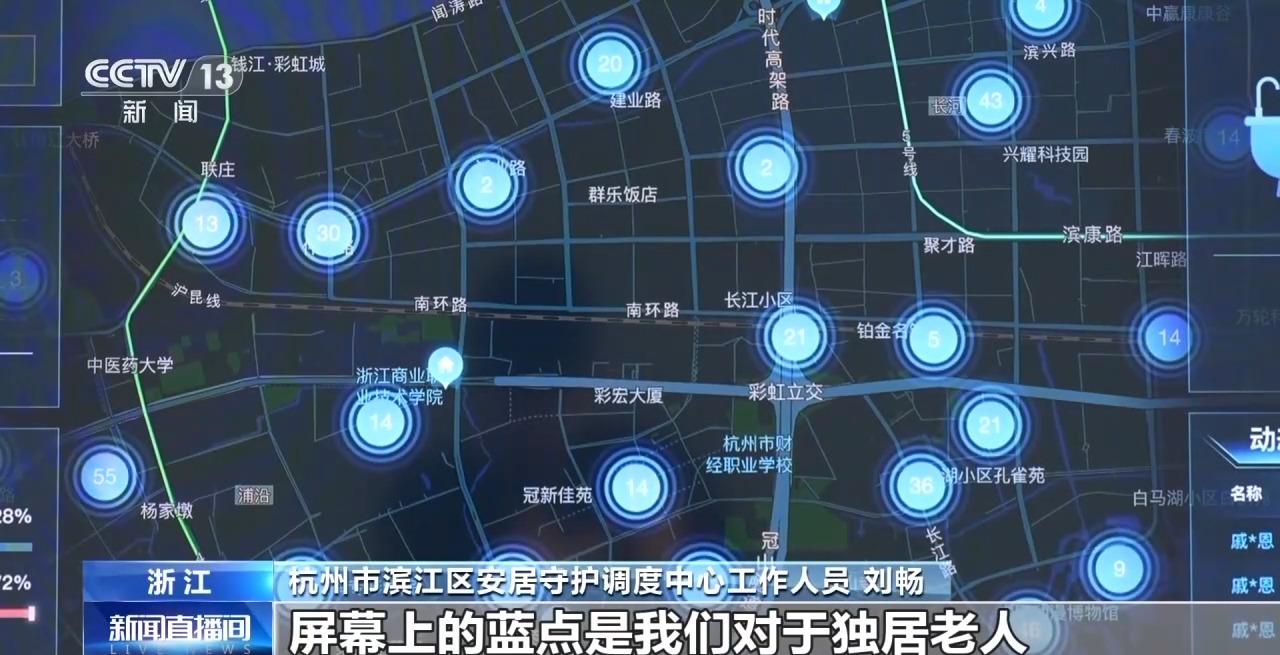Aging is a major global challenge. With more than 300 million people aged 60 and older, China has adopted advanced technologies to ensure its aging population can live safely and with dignity.
Elderly care: From daily care to emotional companionship
Facing the challenge of an aging population, China has sped up the development of a comprehensive and customized elderly care system during the 14th Five-Year Plan period (2021-2025).
According to the Ministry of Civil Affairs, the country had more than 406,000 elderly care institutions and facilities by the end of 2024, with the proportion of nursing care beds – specifically referring to facilities that provide basic daily care and nursing services for elderly individuals with disabilities – increasing from 48 percent in 2020 to 65.7 percent.
Furthermore, the government has expanded long-term care insurance to 49 pilot cities, helping 2.6 million elderly people. The development of an age-friendly social environment is speeding up, with 2,990 model age-friendly communities already set up.
Besides institutional support, technological change in elderly care is significant.
In Hangzhou's Binjiang District, east China's Zhejiang Province, over 600 households of elderly residents living alone are equipped with smart detection devices such as fixed alarms, infrared sensors, and door sensors. These devices are connected to a community dispatch center, where data from the sensors can identify potential risks and enable family members or community workers to respond quickly.

The blue dots representing the locations of elderly homes help staff to find the elderly in need. /CMG
Liu Chang, a staff member at the dispatch center, told China Media Group (CMG) that the blue dots on their screen indicate the locations of elderly homes, and any abnormal behavior, such as extended inactivity, will trigger an alert.
This system has been implemented in over 10,000 households in cities like Hangzhou and Quzhou in Zhejiang Province, where a "home + community + smart elderly care" model is actively being developed.
A new industrial park focused on elderly care technology in the Minhang District of Shanghai hosts over 50 companies developing age-friendly products.

The indicator light connected to the smart adult diaper shows green, meaning the diaper is dry and clean. /CMG
One innovation is a smart adult diaper, which includes high-precision sensors that monitor urine levels in real time. When connected to a sensor, the diaper alerts caregivers with a colored indicator light near the bed. The data is sent directly to mobile devices, enabling caregivers to stay informed about the elderly's needs.
Other products like the bath pod enable bedridden elderly individuals to bathe without leaving their bed, while smart wheelchairs can autonomously plan their travel routes, providing improved mobility.
In Tangshan's Kaiping District in north China's Hebei Province, smart healthcare systems are being implemented to enhance the quality of life for elderly residents who have trouble with daily tasks. Remote calling devices and smart gateways have been installed in more than 300 households in the district, enabling real-time monitoring of seniors' safety and quick responses to potential emergencies.
Along with safety monitoring systems, companion artificial intelligence (AI) robots are increasingly being introduced in nursing homes and communities across the country. These robots not only help with daily tasks but also provide emotional support and interaction. Some robots are designed to play games, sing, and hold conversations, offering seniors entertainment and emotional bonds.
AI empowering the next generation
While improving the lives of older generations with technology, China is also getting its younger population ready for the future through AI-based education.
In cities like Ma'anshan in east China's Anhui Province, AI-powered robots are being introduced to help in teaching at local primary schools. These robots can walk, engage with students, and assist in answering questions in real-time, offering valuable support to teachers and enhancing the classroom experience.
Beginning this fall semester, Beijing has launched AI literacy programs in more than 1,400 schools, reaching over 1.83 million students.
At the elementary school level, the focus will be on experiential learning to ignite children's interest in AI. In middle school, the emphasis will be on cognitive learning, guiding students to use AI to enhance their learning and daily lives. At the high school level, the focus will shift to more comprehensive and application-based learning, concentrating on advanced AI applications and innovation, Wang Pan, deputy director of the Beijing Municipal Education Commission, told CMG.
Beijing has issued a series of documents and measures to encourage the use of AI in primary and secondary education. On August 22, the first batch of 160 sets of city-level curriculum resources was launched, covering all grade levels. Each set includes a 15-minute core teaching video, a teaching guide, and activity task sheets, making it easy for teachers and students to select from, like "a course supermarket," said Wang.
Wang highlighted that the goal is for every child to be able to experience and use AI effectively.
"We aim to improve every child's AI literacy, while also giving equal importance to both teachers and students. We are building a team of teachers who not only understand education but also possess AI knowledge, enhancing the collaboration between humans and AI in education. At the same time, we focus on developing real-world applications, allowing children to experience and apply AI in practical scenarios," said Wang.


